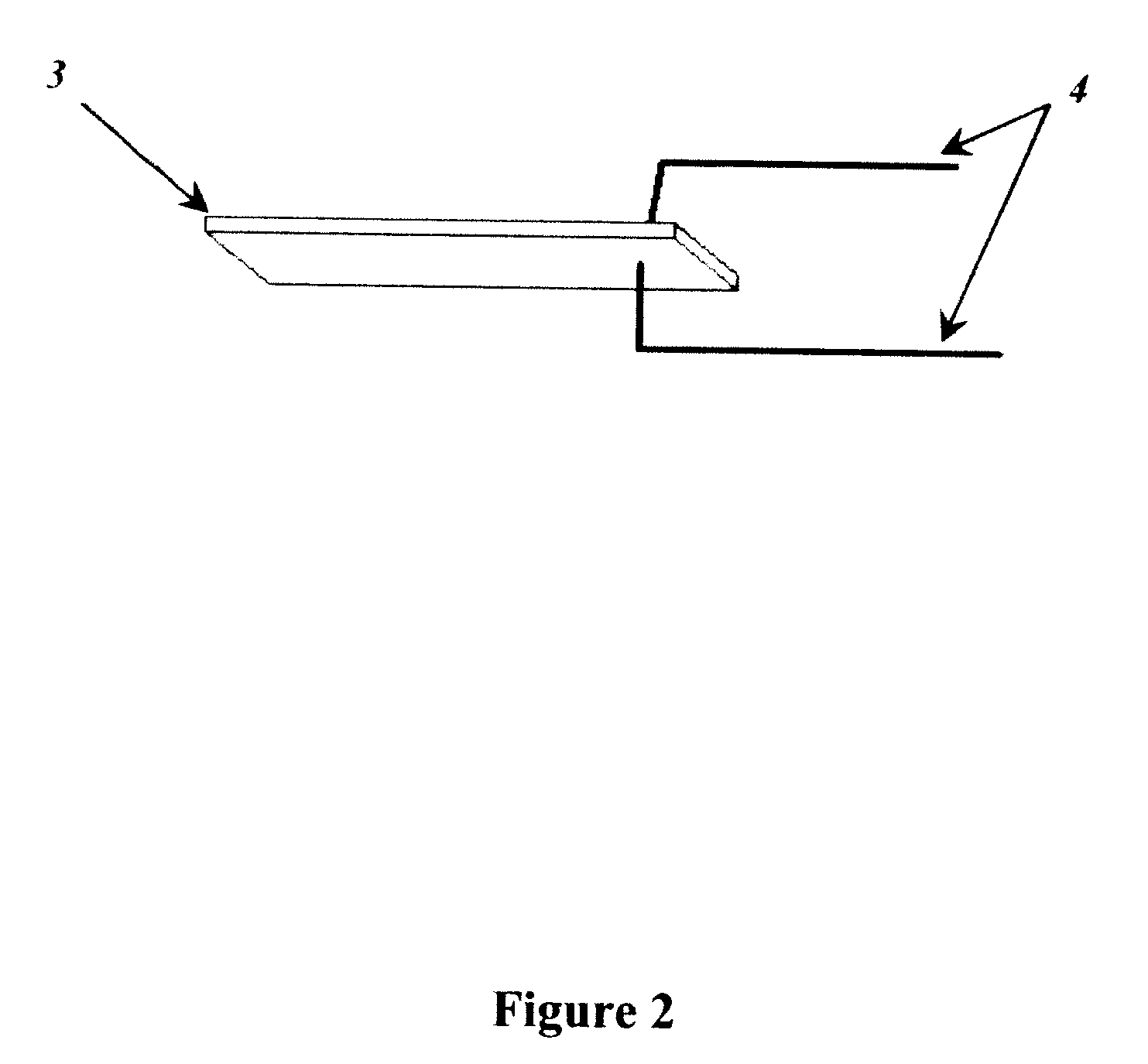Direct assembly process for fabrication of ionomeric polymer devices
a technology of ionomeric polymer and assembly process, which is applied in the direction of mechanical power devices, mechanical equipment, machines/engines, etc., can solve the problems of inability of actuators to operate in air without a means of supply, inability to achieve direct assembly and fundamental limitations of ionomeric polymer transducers. achieve the effect of reducing the number of parts, improving the quality of ionomeric polymer devices
- Summary
- Abstract
- Description
- Claims
- Application Information
AI Technical Summary
Benefits of technology
Problems solved by technology
Method used
Image
Examples
example 1
[0083] A Nafion-117 membrane was pretreated by boiling for one hour in 1.0 M sulfuric acid followed by boiling for one hour in deionized water. The membrane was then soaked in 0.5 M LiCl for 24 hours to exchange it into the lithium counterion form. The lithium exchanged membrane was then dried at 150 degrees Centigrade under vacuum for 12 hours. A section of this pretreated membrane was then soaked in neat 1-ethyl-3-methylimidazolium trifluoromethanesulfonate ionic liquid at 150 degrees Centigrade for 4.5 hours. The uptake of ionic liquid was determined to be 45% of the dry weight of the membrane. Another section of the membrane was soaked in neat formamide at 60 degrees Centigrade for one hour. The uptake of formamide was 100% of the dry weight of the membrane.
[0084] An electrode mixture was prepared containing 36% (by weight) of a commercially available 5% Nafion suspension, 29% isopropyl alcohol, 29% deionized water, and 5% ruthenium (IV) oxide powder (diameter less than 1 micro...
example 2
[0090] Four ionomer actuators were fabricated using the direct assembly process. Nafion-117 membranes were pretreated by boiling for one hour in 1.0 M H2SO4 followed by boiling for one hour in deionized water. The membranes were then soaked in 0.5 M LiCl for 24 hours to exchange it into the lithium counterion form. The lithium exchanged membranes were then dried at 150 degrees Centigrade under vacuum for 12 hours.
[0091] Sections of the pretreated membrane were soaked in ethylene glycol, diethylene glycol, triethylene glycol, and poly(ethylene glycol) (molecular weight 200) at 60 degrees Centigrade for one hour. The diluent-swollen Nafion membranes were painted on both sides with an electrode mixture containing 36% (by weight) of a commercially available 5% Nafion suspension, 29% isopropyl alcohol, 29% deionized water, and 5% ruthenium (IV) oxide powder that had been stirred and sonicated for three hours to disperse the RuO2 particles. The volatile solvents were removed from the ele...
example 3
[0094] Nafion-117 membranes were pretreated by boiling for one hour in 1.0 M H2SO4 followed by boiling for one hour in deionized water. The membranes were then soaked in 0.5 M LiCl for 24 hours to exchange it into the lithium counterion form. The lithium exchanged membranes were then dried at 150 degrees Centigrade under vacuum for 12 hours. The membranes were swollen with triethylene glycol by soaking in neat triethylene glycol at 60 degrees Centigrade for one hour.
[0095] An electrode mixture was prepared containing 36% (by weight) of a commercially available 5% Nafion suspension, 29% isopropyl alcohol, 29% deionized water, and 5% ruthenium (IV) oxide powder (diameter less than 1 micron, surface area 45-65 m2 / g). The mixture was stirred and sonicated for three hours to disperse the RuO2 particles. This mixture was painted directly onto both sides of the diluent-swollen Nafion membranes. The volatile solvents were removed from the electrode mixture by placing the membranes under a ...
PUM
| Property | Measurement | Unit |
|---|---|---|
| Fraction | aaaaa | aaaaa |
| Fraction | aaaaa | aaaaa |
| Fraction | aaaaa | aaaaa |
Abstract
Description
Claims
Application Information
 Login to View More
Login to View More - R&D
- Intellectual Property
- Life Sciences
- Materials
- Tech Scout
- Unparalleled Data Quality
- Higher Quality Content
- 60% Fewer Hallucinations
Browse by: Latest US Patents, China's latest patents, Technical Efficacy Thesaurus, Application Domain, Technology Topic, Popular Technical Reports.
© 2025 PatSnap. All rights reserved.Legal|Privacy policy|Modern Slavery Act Transparency Statement|Sitemap|About US| Contact US: help@patsnap.com



